If you’re looking for a getaway with history and culture at the heart, then why not consider a visit to a UNESCO World Heritage site? With so many to choose from in 167 different countries, it’s difficult to know which outstanding places are near your holiday destination. We’ve narrowed it down to 10 World Heritage sites in Europe that you need to see!
Top 10 UNESCO World Heritage Sites in Europe
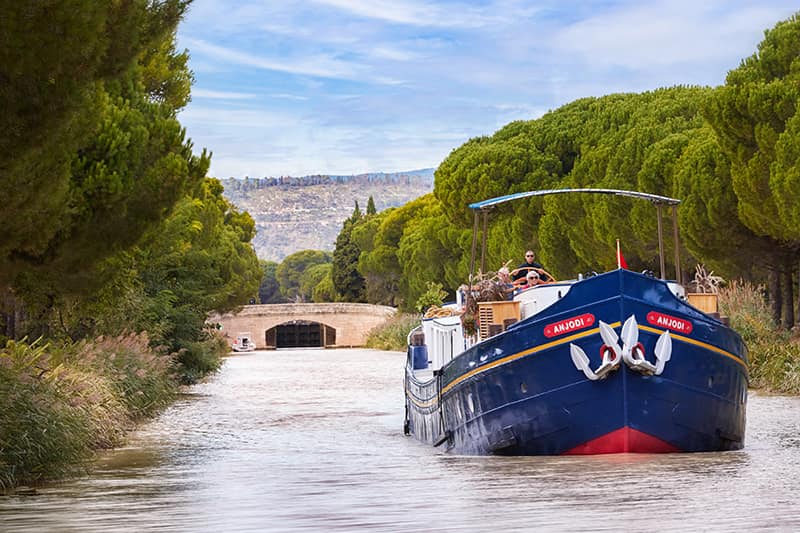
Who is UNESCO?
UNESCO is the World Heritage Convention organisation that helps to protect places around the world that are unique to civilisations or geography. Promoting and supporting the protection of special places means that they will be better cared for and preserved in the future.
What does UNESCO stand for?
UNESCO stands for ‘United Nations Educational, Scientific and Cultural Organisation’.
What are UNESCO World Heritage sites?
UNESCO world heritage sites are unique to the people and landscapes around them. Some of the greatest sites in the wider world include the Great Barrier Reef in Australia, the African Serengeti, and the pyramids in Egypt.
How many UNESCO world heritage sites are there?
As of July 2023, there are 1157 properties on the World Heritage list. The places on the list are sorted into categories determining whether they are a place of natural importance or cultural significance. UNESCO also updates their website as to whether a listed World Heritage site is in cultural or natural danger.
It might be difficult to visit all the places on the map, so why not start with a slightly smaller region?
Here’s our Top 10 UNESCO World Heritage Sites in Europe…
1. Ferrara, City of the Renaissance
The magnificent city of Ferrara is filled with extraordinary features and is bristling with terracotta-toned buildings that promise to submerge you in a Mediterranean dream. Located in Northern Italy, Ferrara was declared a UNESCO World Heritage site in 1995 because of its remarkable Renaissance buildings, which are laid out in a design by Biagio Rossetti.
Walk the majestic streets and see the sites founded by the formidable Este family, including a castle, palaces, cathedral, and a university, that’s complete with botanical gardens. Learn about the ancient history of the city in the National Archaeological Museum, which talks about Ferrara’s past during the 6th century. With a vast cultural and historic record, it’s hardly surprising that Ferrara is a UNESCO World Heritage site.
We recommend: 20-passenger La Bella Vita
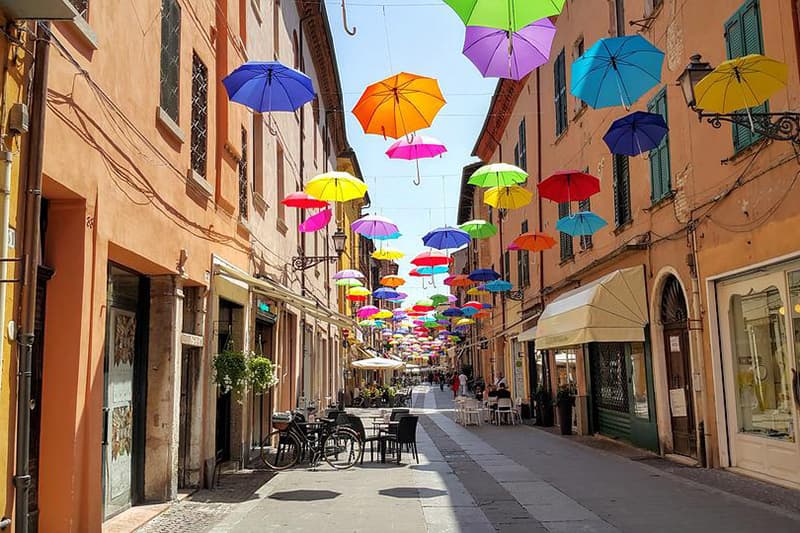
2. Abbaye de Fontenay
Hidden away in dense foliage, not far from the Burgundy Canal, is the secluded paradise that is the Abbaye de Fontenay – also known as the Fontenay Abbey. This World Heritage site was listed by UNESCO in 1981 and is a stunning complex of buildings that date from as long ago as the 12th century. Now having been fully restored, visitors can enjoy the buildings and Romanesque architecture on a tour through its history. Wander the empty dormitories, cloisters, and the common room to imagine how the Cistercian monks went about their daily lives.
The monks at the Abbaye de Fontenay were so self-sufficient that they even had their own bakery! From a restored infirmary to a forge where iron was crafted, this World Heritage site at Fontenay has so much to explore. Why not finish your trip with a stroll along the streams and through the perfectly manicured grounds?
We recommend: 12-passenger La Belle Epoque
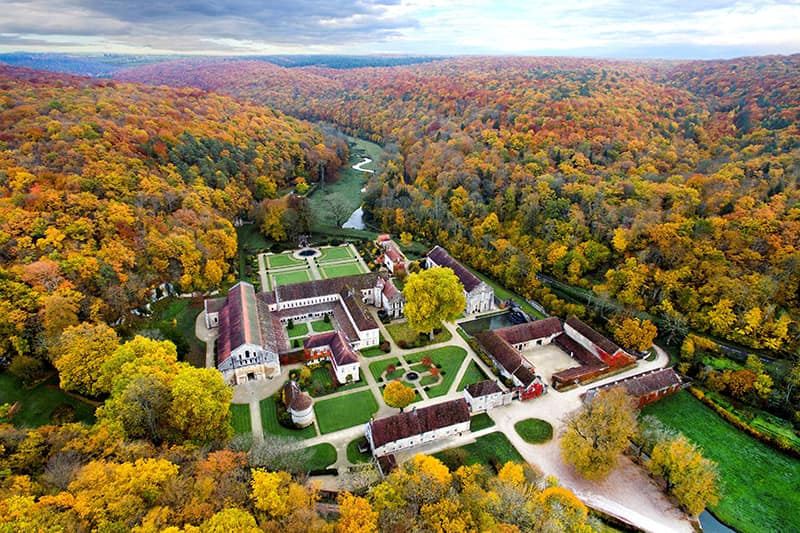
3. Reims Cathedral
Around two hours’ drive north-east of Paris is the city of Reims, which is famous for its UNESCO World Heritage-listed cathedral, Notre Dame de Reims. This beautiful cathedral was built in the 13th century and is decorated with the most magnificent medieval Gothic architecture you might ever set eyes upon. Affectionately nicknamed the ‘Cathedral of Coronations’, Reims Cathedral has crowned no less than 33 French Kings.
Enjoy a moment of peace and reflection as you walk through the nave, with its stained-glass windows gently refracting the light onto you. Having been heavily damaged by shelling during the First World War, much of Reims Cathedral was restored and many of its glass windows were replaced. Don’t miss Marc Chagall’s modern stained-glass windows, which depict the tree of Jesse, the trials of Abraham and the coronations of Reims. Whilst you’re in Reims, why not enjoy a glass of champagne, too? After all, it’s what the city is famous for!
We recommend: 12-passenger Panache
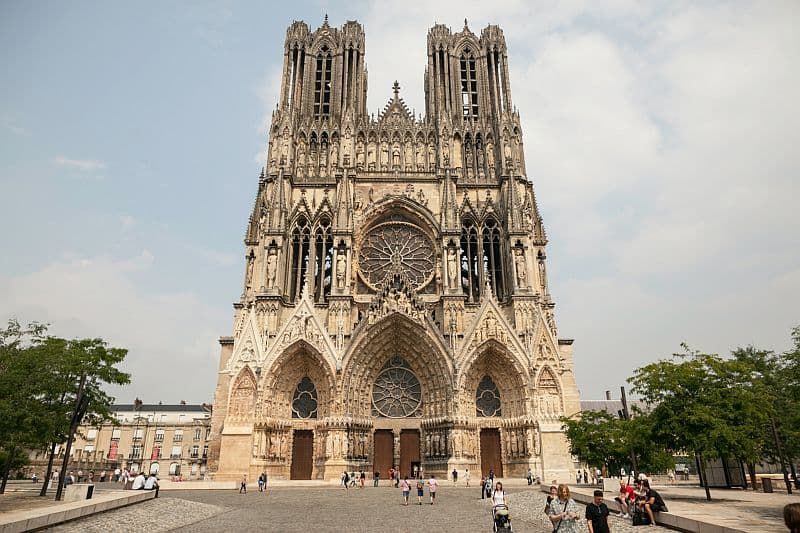
4. Vézelay
The medieval town of Vézelay looks quaint and unsuspecting perched upon a hill in the French countryside. However, once, it was at the centre of a call to arms, when the Second Crusade was preached at Vézelay in 1146. Founded by Gerard, the Duke of Burgundy, the UNESCO-listed church built on the peak of the hill is said to entomb the remains of Mary Magdalene.
There’s only one way to see this beautiful World Heritage site, and that’s by climbing the steep streets to the top of the hill. The cobbled roads are lined with shells that were left by the thousands of pilgrims who passed through Vézelay in the 12th and 13th centuries, but there’s respite to be found in the shape of cafés and gift shops in the alleys. The Church of the Madeleine is the 12th century basilica at the top of the hill. From there, you can enjoy spectacular views of the Morvan Regional Park and surrounding landscape.
We recommend: 8-passenger L’Art de Vivre

5. Mantua
The sleeping city of Mantua looks like a destination from a fairy tale. With its domed basilica, towers and spires visible from the lakes of the River Mincio, it is surrounded by water on three sides. Widely known for its role in the history of opera, Mantua is an ancient city that dates to Roman times. Take in the magnificence of its terracotta-coloured architecture by walking the streets of this UNESCO World Heritage site.
To make the most of your time in Mantua, head to the Piazza delle Erbe, which hosts a fruit and vegetable market and a splendid selection of restaurants and bars. If you’re searching for Mantuan splendour, then Palazzo Ducale will not disappoint. Home to the Gonzaga family between 1328 and 1707, it was a dominating royal influence during the medieval period. Just a short distance from Mantua is the world heritage site of Sabbioneta, which stands still in time as an excellent example of a Renaissance city.
We recommend: 20-passenger La Bella Vita
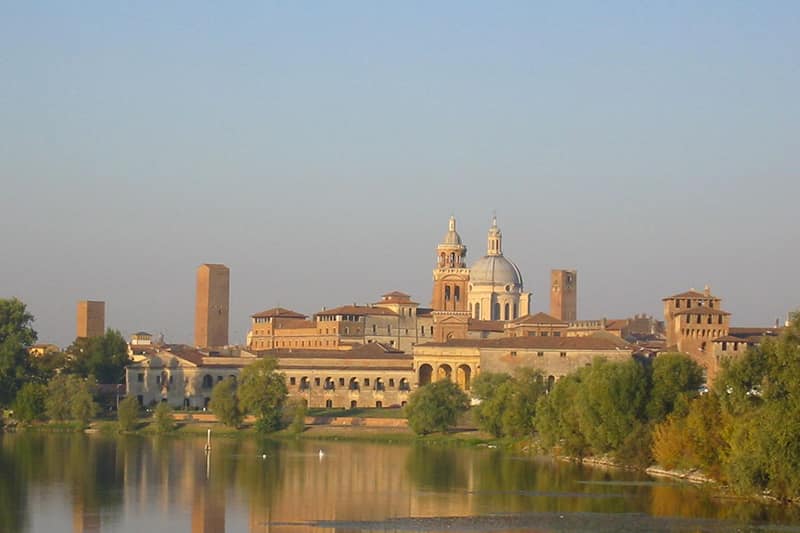
6. Canal du Midi
Envisioned by Pierre-Paul Riquet, the Canal du Midi was built between 1667 and 1694 and is one of the most significant accomplishments of French engineering. This UNESCO World Heritage site extends for an enormous 240 kilometres and boasts 328 structures, from tunnels to aqueducts. Snaking through the French countryside and into the towns of Southern France, this unmissable landmark will take you on a journey back in time.
Immerse yourself in the Canal du Midi’s incredible scenery and experience the incredulity of seventeenth-century engineering whilst on board a hotel barge. The water is the best way to experience the Canal du Midi, which passes through a grand total of 63 working locks, the famed nine oval locks at Fonseranes, and the Orb Aqueduct at Béziers. With so much to see, this world heritage site is certainly exciting to explore!
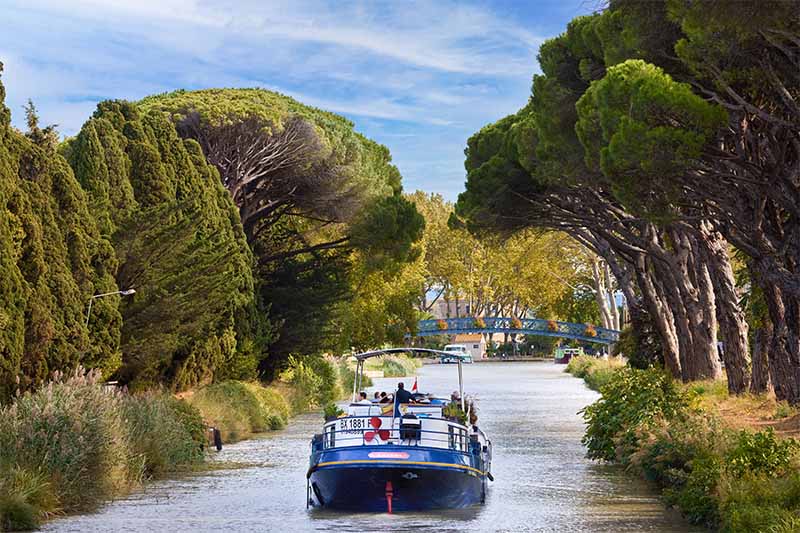
7. The Côte de Beaune vineyards
The Côte de Beaune vineyards are a marvellous array of neatly planted vines that band over the hillsides between Beaune and Nuits-Saint-Georges in the Burgundy region of France. The idyllic vineyards of the Côte de Beaune are sectioned up into parcels of land that are owned by some of the biggest names in the wine industry. In this region of Burgundy, Grand Crus and Premier Crus are the most popular wines produced.
The special soils of the Côte de Beaune vineyards make this UNESCO World Heritage site so unique. The parcels of land are known as ‘Climats’, and the French have been growing wines in this region of Burgundy since the Middle Ages. Visitors to the heartland of Burgundy wine can drive through the vineyards to see them flow over the landscapes. We’d also recommend visiting a vineyard, such as Domaine Chanson, which offers a tour of their vines and wine cellar.
We recommend: 8-passenger Finesse and 12-passenger L’Impressionniste
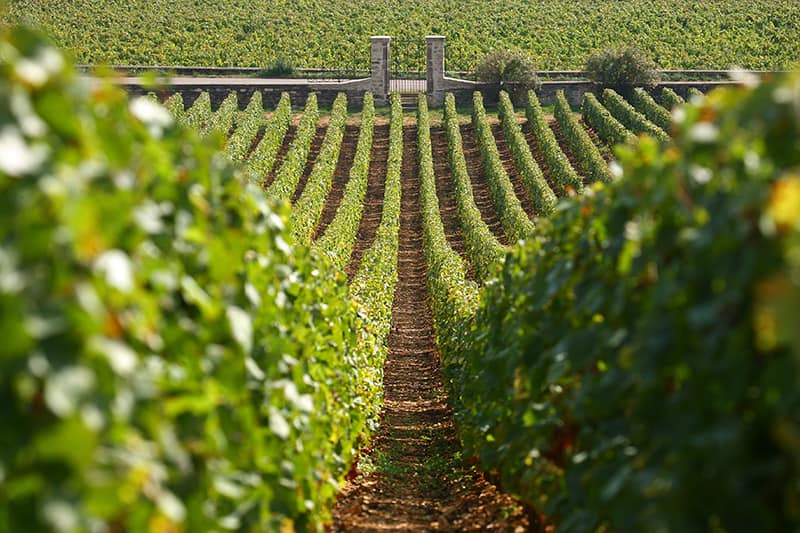
8. Abbaye St-Pierre de Moissac
If you find yourself in Southwest France, then don’t miss an opportunity to visit the UNESCO listed Moissac Abbey. Declared a world heritage site in 1998, Abbaye St-Pierre de Moissac is a stunning example of a Benedictine monastery from the medieval period. Situated on the route of the popular pilgrimage destination, Santiago de Compostela, Moissac Abbey saw much footfall during the Middle Ages and its architecture was inspired by its many visitors.
Founded in 506 AD, Abbaye St-Pierre de Moissac was consecrated by Pope Urban in 1097. Experiencing a golden age in the 11th and 12th centuries, the Abbey Church of Moissac and its cloisters were restored in the Romanesque style in medieval times and are relatively intact today. Filled with treasures, such as sculptures of the Virgin of Pity and the Entombment of Christ, and decorated with medieval pillars topped with sculptures of birds and plants, Moissac Abbey is rich in art and history.
We recommend: 8-passenger Rosa in Gascony
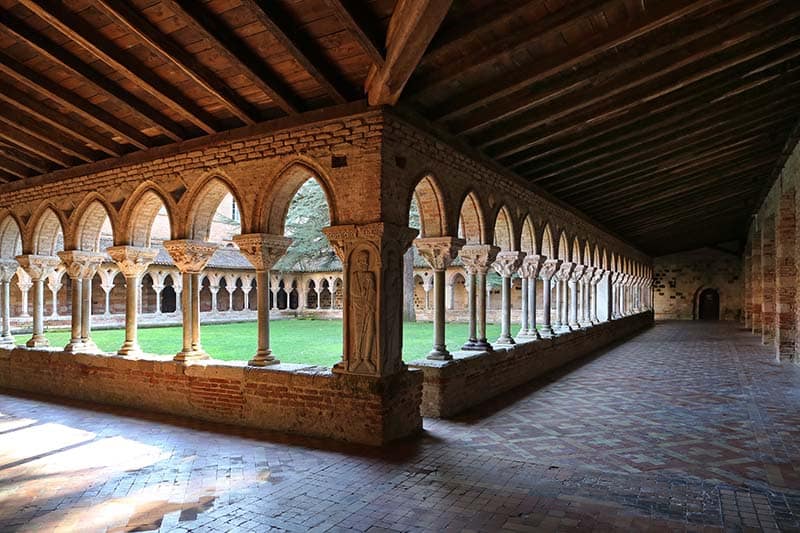
9. Saint Émilion
The Saint Émilion jurisdiction is situated at the heart of Bordeaux. Dating back to Roman times, this ancient area is famous for its links to winemaking. During the 11th century, the location grew in popularity because it was on the pilgrimage route to Santiago de Compostela. The land in the area is a monoculture, meaning that it is only used to grow vines. The most dominant grape varieties grown here are Merlot and Cabernet Franc. Saint Émilion is a prestigious growing area and is famed for producing Grand Cru.
With an excellent array of châteaus , vineyards and monasteries in the area, Saint Émilion is an excellent place to stop and take in the scenery. Joining the UNESCO world heritage list in 1999, Saint Émilion has been described as a cultural landscape which has been created by its involvement in viticulture. Some vineyards allow visits and perhaps you’ll even have an opportunity to see one of the many châteaux that lay within the precincts.
We recommend: 8-passenger Rosa in Bordeaux
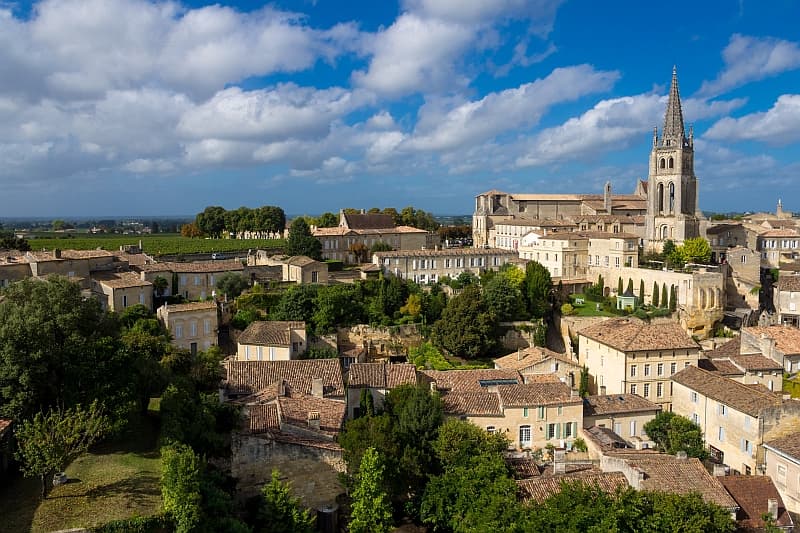
10. The Loire Valley
In the 16th century, it became fashionable to have an address in France’s Loire Valley, which falls between Sully-sur-Loire and Chalonne. Favoured by the Kings of France and their families, many of the region’s châteaux underwent improvements during this time. Having been a primary seat of power in France until the French Revolution, The Loire Valley is now recognised as a UNESCO World Heritage site.
Known for a fusion of architecture, art and literature during the 16th, 17th and 18th centuries, the Loire Valley is known for its assimilation of Mediterranean culture. We simply couldn’t list one of the Loire valley châteaux without the others, so you might just have to visit the region and choose for yourself! Learn about French royalty as you explore the fairy-tale castles at this world heritage site, and visit the château where Leonardo da Vinci died. We particularly recommend making stops at châteaux Chambord, Chenonceau, Amboise and Blois.
We recommend: 8-passenger Renaissance
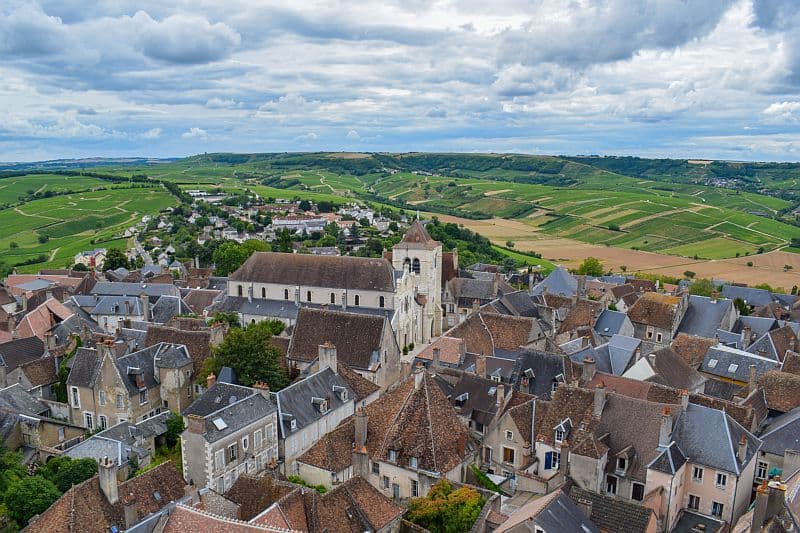
Cruise to Europe's UNESCO World Heritage Sites
Book a European Waterways luxury hotel barge cruise to experience Europe’s UNESCO World Heritage sites in the ultimate style and comfort. For help in finding the perfect destination or barge to suit you, get in touch with our friendly, experienced cruise experts who will be happy to walk you through the different options we have available and tailor your perfect trip.
 English
English
 Spanish
Spanish French
French German
German Norwegian
Norwegian Portuguese
Portuguese Swedish
Swedish Italian
Italian Russian
Russian Simplified Chinese
Simplified Chinese Japanese
Japanese